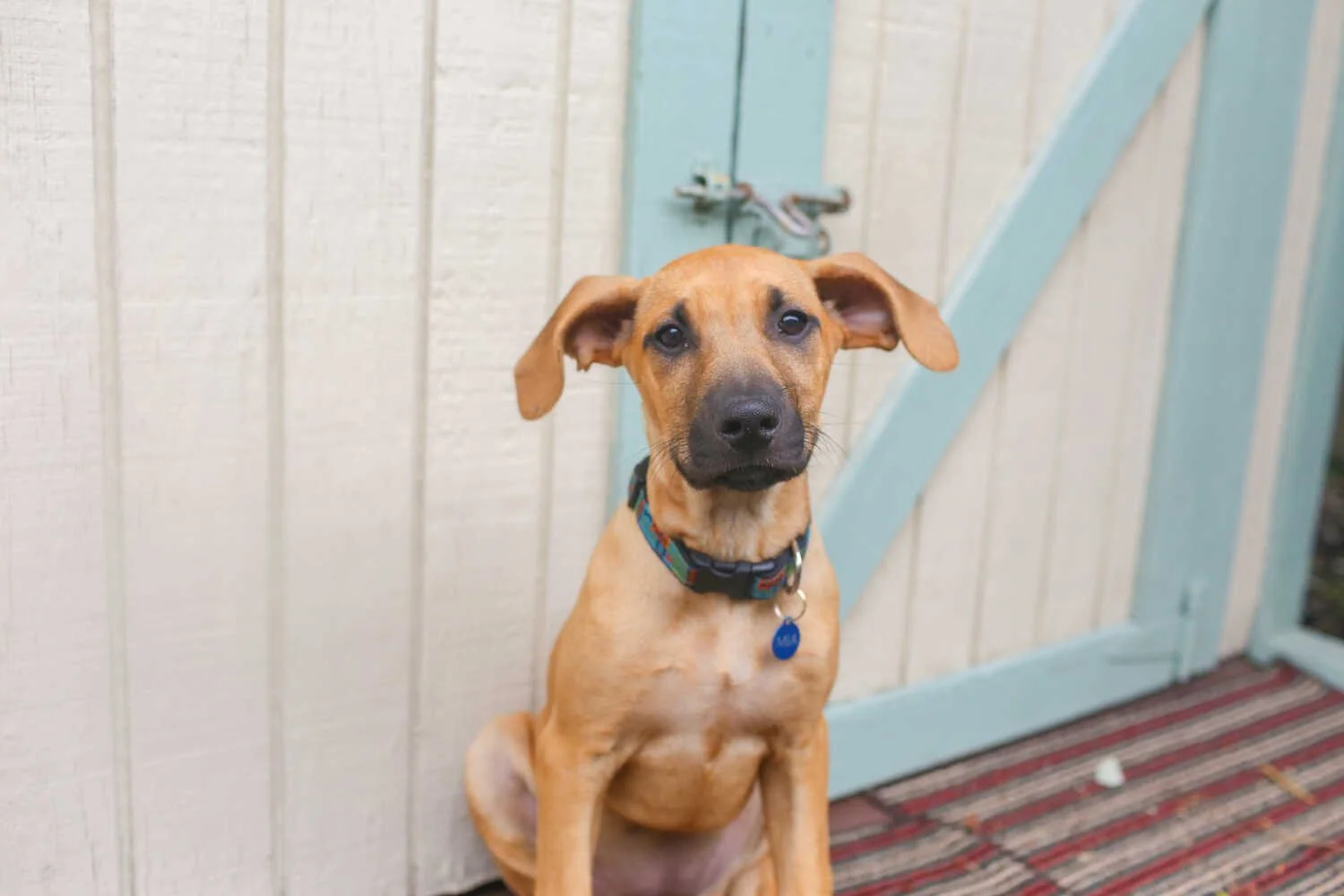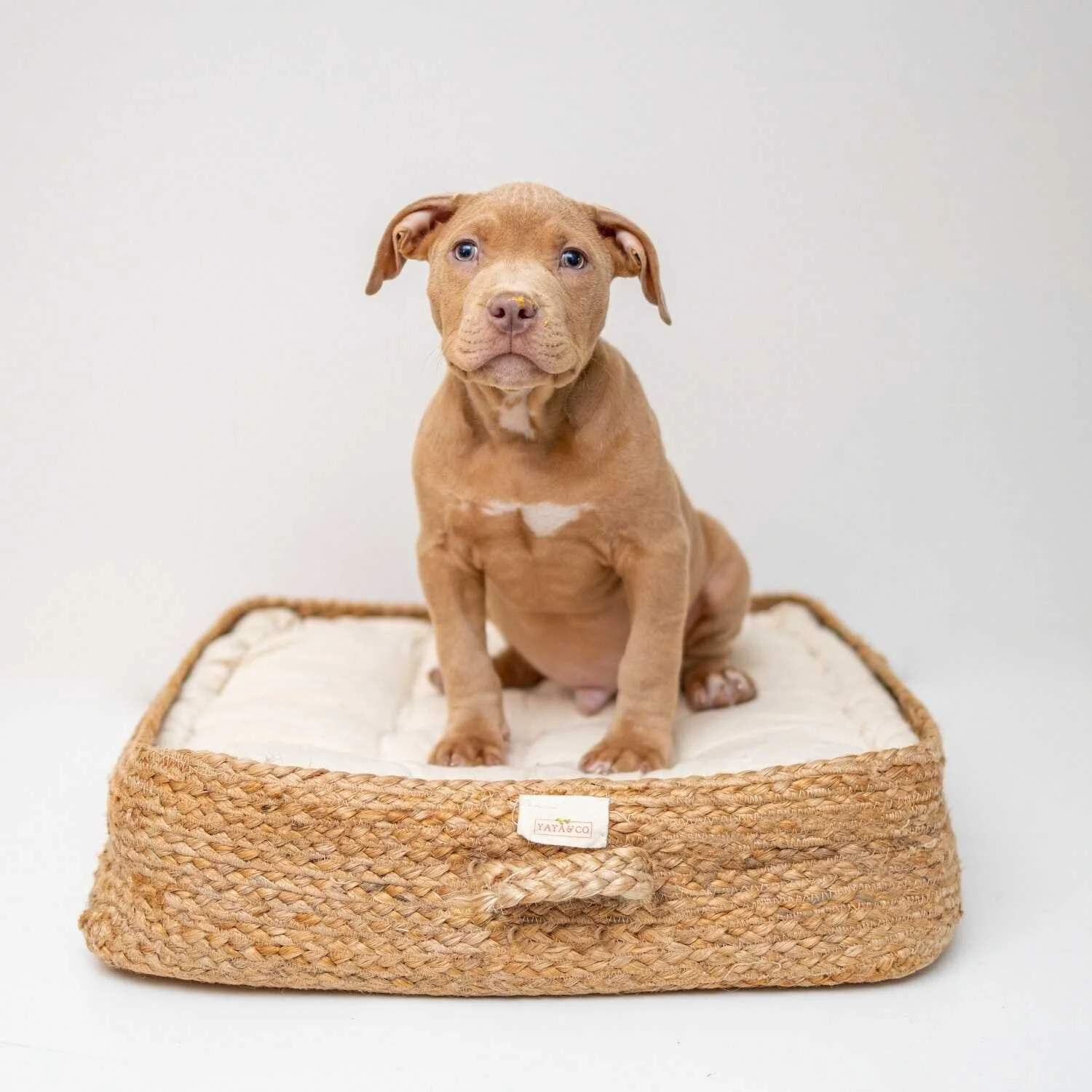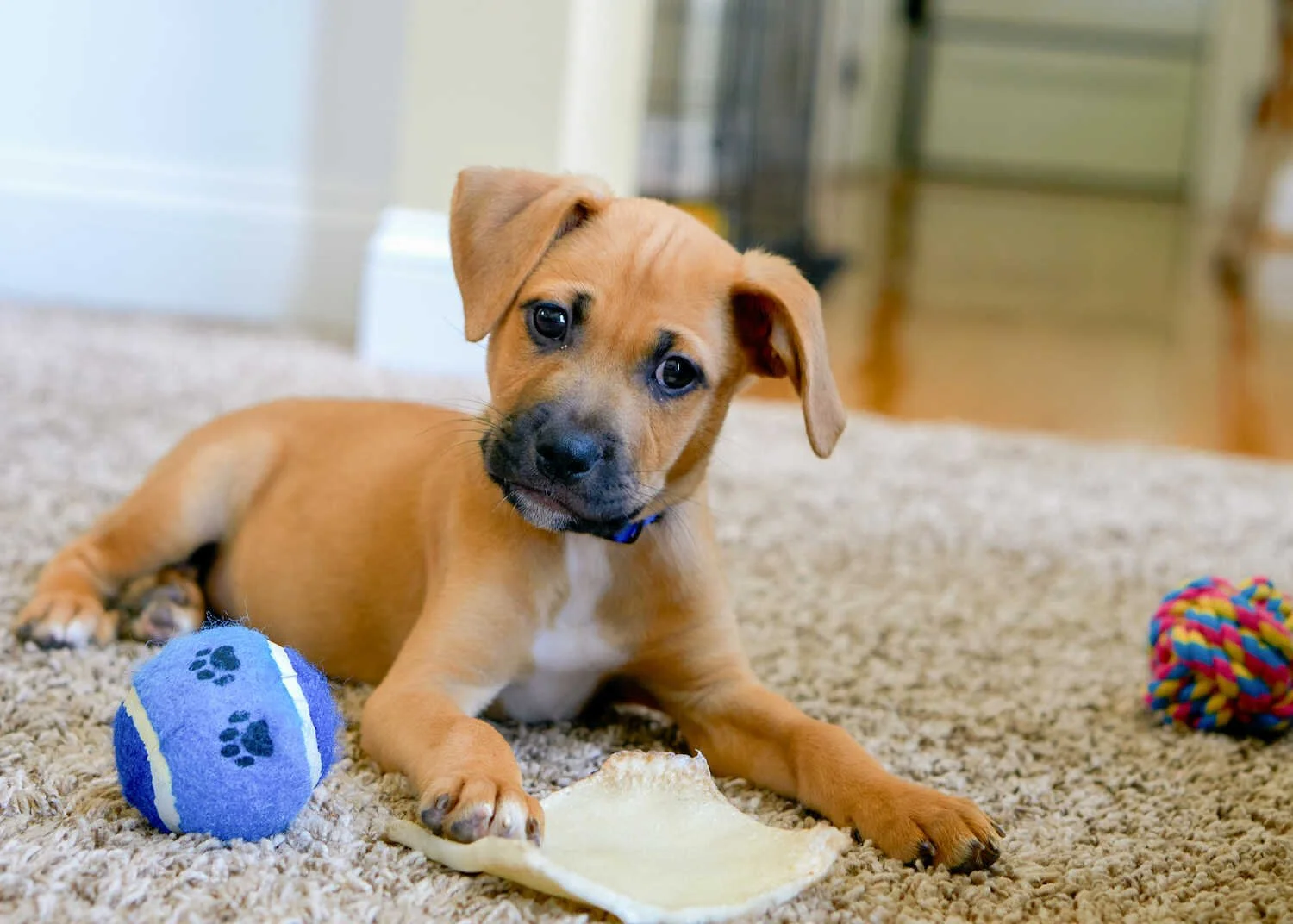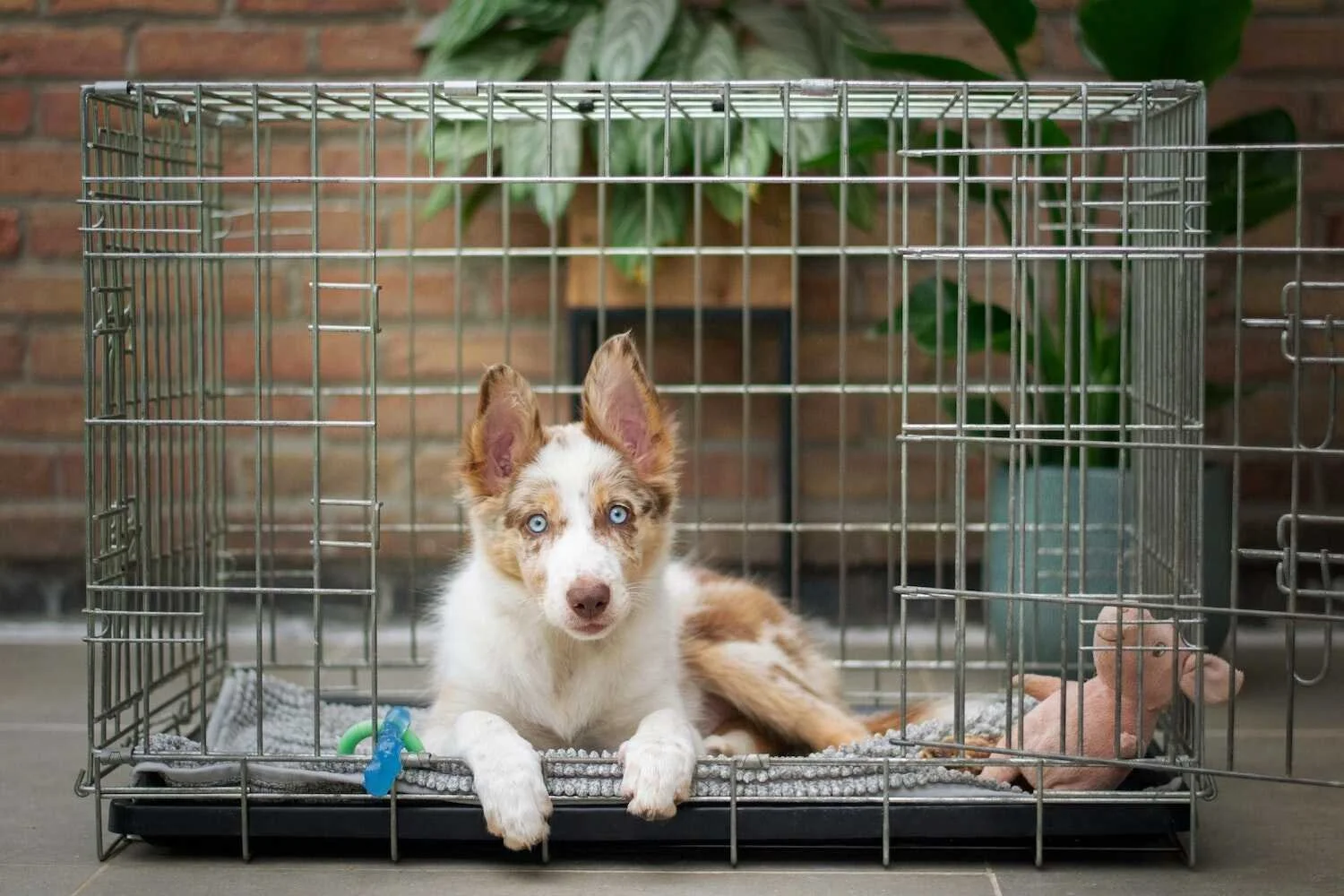Guide to the First 48 Hours with a New Puppy
Getting a new puppy is one of the most exciting things you’ll ever experience as a pet owner. After all, nothing beats finally getting to pick up your pup and bring them home for the very first time. My family has owned dogs my entire life, and we've welcomed many puppies into our homes. The adorable puppy you see in this blog is Mia, my parent's newest fur baby.
Because puppies are essentially babies, you need to make sufficient preparations to help your pup get acclimated to their new home. To help you give them a warm welcome, this guide has a few tips on how to best spend the first 48 hours with your new pup.
Top Tips to Brining Home a New Puppy
Prepare Your House for a New Puppy
Before introducing your pup to their new living arrangements, you first need to “puppy-proof” your home. Make sure that any potentially harmful items in the house (such as sharp objects, exposed wiring, medications, toxic plants, and possible choking hazards) are kept out of your new puppy’s reach.
Additionally, it would be a good idea to invest in pet merchandise such as:
Puppy play toys such as rope toys and plush toys to keep them entertained.
See more info in my guide to prepare your home for a new dog.
Make Arrangements for Your Puppy’s Journey Home
Providing your puppy with a warm welcome includes planning for their trip to your home. If you’re picking them up from another home or a shelter, ask the former owners or handlers if the pup has a favorite blanket, toy, or other items. Moving into a new environment tends to be anxiety-inducing for pups, and having their familiar items with them can help ease their tension during their journey.
When the big day arrives, you need to bring along certain items for a smooth ride home. These essentials include a travel-friendly dog carrier (secured to a seatbelt), portable water bowls, and a bag where you can put the pup’s belongings in case you receive any from the previous owner.
Also, you need to be prepared for when your pup needs to go potty while in transit. Line the inside of the dog carrier with puppy pads which will absorb any urine. Make sure to bring poop bags, extra puppy pads, paper towels, and a harness or leash to maintain control over your pup during pit stops.
Always Supervise Your Puppy As They Explore Your Home and Yard
Once you’ve brought your pup home, you need to start familiarizing them with their new environment. Supervise them as they wander, sniff around, and explore the space. It would be ideal to introduce them to certain parts of the house first, particularly the areas where they will spend most of their time. These include potty spots, the yard, and places where they can nap and play.
We use sturdy baby gates to block off areas of the house that are not puppy-friendly. Keeping your puppy from having full run of the house will minimize potty accidents and possible destruction of your things (puppies love to chew up your favorite shoes!).
Crate training, houseproofing, and supervision are all part of creating a safe, structured environment for your new arrival. To ensure you’re meeting all of their health and comfort needs during this critical transition period, it’s vital to have access to trustworthy information on nutrition, supplies, and care. You can find essential resources and detailed guides to support every stage of your puppy’s development at honestpet.com.
Helping Your Puppy Learn Their New Name
As you let your fur baby move around their new home, you should start calling them by their name. To get them to learn their name quickly, show your excitement and joy when they respond to their name and give them a reward so that they can associate their name with positive feelings.
Begin Potty Training Your New Puppy
Your pup’s first 48 hours in your home are the best time to start potty training. Before commencing training, however, you need to designate a potty area first.
Upon taking your pup home, keep an eye out for tell-tale signs that they need to do their business soon. Then, take them to the designated spot immediately until they are able to associate the area with defecating or urinating.
To make the training process easier, consider taking your pup to the potty area at various times of the day. For puppies, the most common times to go potty are after they wake up, after a meal, during playtime, or after a drink of water.
Start Crate Training Early on Their First Day Home
Ideally, crate training should start on the day that your puppy comes home. By opting for early crate training, you will help your pup adjust to their crate quickly. That said, it’s a good idea to let them sleep in the crate during the first few weeks to get them used to it.
Letting your new puppy have free roam of the house while you’re at work or running errands can be very problematic. The big benefits of having a puppy stay inside a crate is that you know that they are safe when you can’t be home. It also means that your house and belongings are safe from destruction when you’re not home.
When choosing a crate for your pup, pick one that is spacious enough for them to sleep, stand, and move around with ease. Where you will place your pup’s crate ultimately depends on you, but as a general rule, the crate should be in a spot where your fur baby can see you without feeling too cramped or too exposed.
GIVING YOUR PUPPY A NEW ID TAG
Get them an updated ID tag with their name and your contact information. As your puppy becomes accustomed to their new environment and thus more exploratory, they’ll be safer with instant identification on their collar. Jingle-free custom tags for dogs are an option for more quiet and peaceful times at home.
Gradually Introduce Your New Puppy to Other Pets in the Family
Depending on the temperament of your pup, the introduction stage with other members of the family can either be a slow and lengthy process or a quick and easy phase. If you have another pet, make sure to get them and your new pup acquainted in a controlled environment so you can intervene immediately in case either pet doesn’t react well.
That said, you should also give attention to your older pets and spend time with them while your new pup is getting used to your home. This will reinforce the idea that your older pets can still expect love and affection from you despite the presence of a new furry family member. Make sure to spend some one-on-one time with your older pet and give them plenty of breaks from the high-energy puppy.
Introducing Your Puppy to Small Children
One of the big benefits of adopting a puppy is that they tend to acclimate well to homes with babies and toddlers. Older dogs can be set in their ways and could possibly have a predisposition to dislike the energy and attention of little humans. Puppies can easily be trained and molded into kid-friendly dogs, and they often match the high energy levels of children running around the house and playing.
For more detailed information, you can see my guide on how to adopt a dog when you have small children.
Patience is Key When Training New Puppies
Parenting is never easy, even when it involves an adorable little puppy. The first few days after adoption have a significant impact on how easy it will be for your pup to get used to the idea of being at home in your house. During this time, you need to keep monitoring your new pooch in case they show signs of illness, discomfort or emotional distress. Some of these concerns may pop up beyond your pup’s first two days at home, so it’s vital to stay mindful of how your pooch is settling in.
Be patient with your pup and yourself as you establish new routines in your home. But more importantly, make your pup understand that you will be there for them for good by making an effort to get the first few days right.
Give your new puppy a comfortable place to rest and sleep with a brand new dog bed.
Keep your puppy entertained with chew toys. Giving them toys they love to tear apart will save your furniture, house and belongings from getting destroyed.
As I mentioned above, the earlier the better when it comes to crate training. Puppies are safe and sound inside their crates when you’re not home. Not to mention the fact that your house will be safe from a puppy’s chewing and potty habits.












